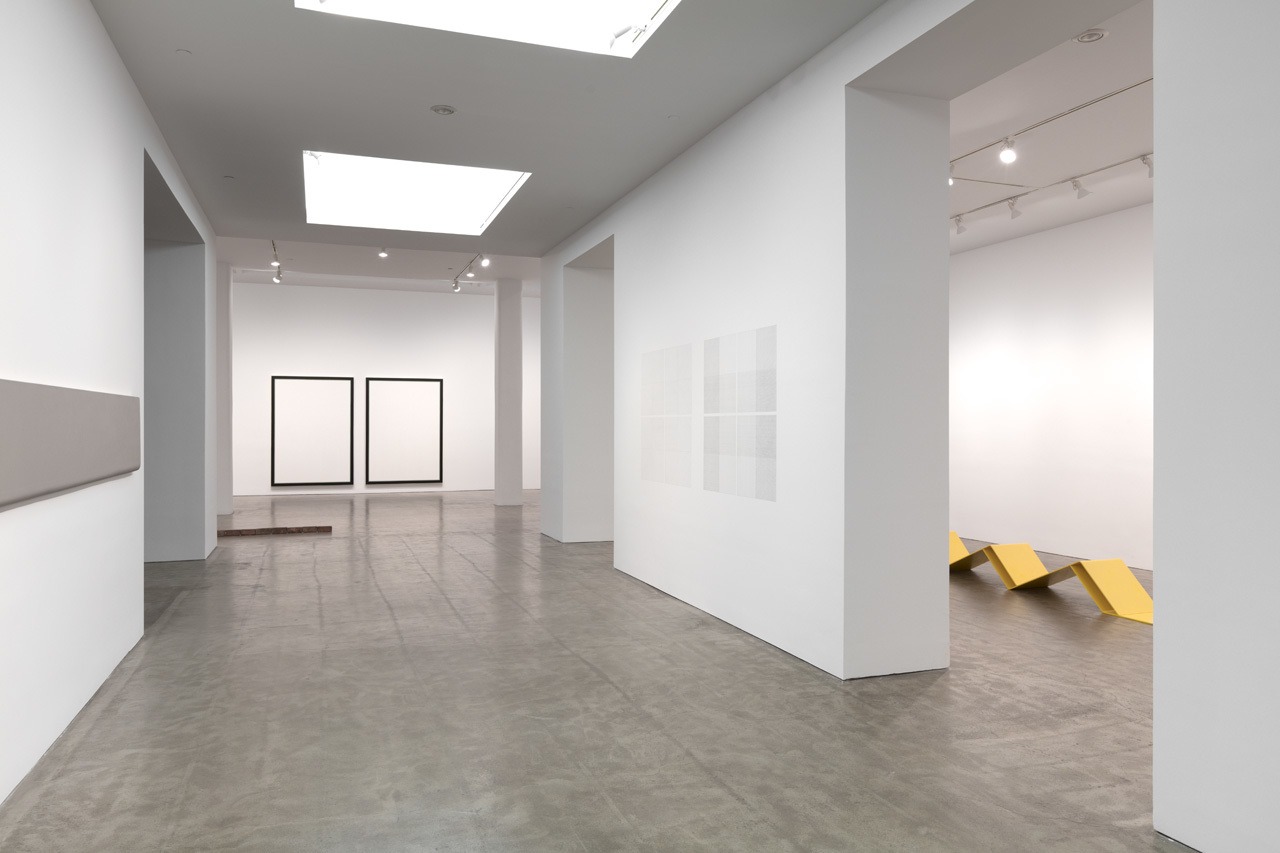50 Years: An Anniversary
A Benefit Exhibition for March For Our Lives
10 Oct - 03 Nov 2018
50 YEARS: AN ANNIVERSARY
A Benefit Exhibition for March For Our Lives
10 October – 3 November 2018
NEW YORK — “50 Years: An Anniversary” celebrates the October 1968 opening of the Paula Cooper Gallery, the first art gallery in SoHo at 96-100 Prince Street. The inaugural exhibition, organized by Robert Huot, Lucy Lippard and Ron Wolin, benefitted the Student Mobilization Committee To End The War In Vietnam and Veterans Against The War In Vietnam. The fiftieth anniversary show will include artworks from that time period by the original artists: Carl Andre, Jo Baer, Robert Barry, Bill Bollinger, Dan Flavin, Robert Huot, Will Insley, Donald Judd, Sol LeWitt, Robert Mangold, Robert Murray, Doug Ohlson, and Robert Ryman.
The cohesive and pioneering 1968 Benefit exhibition holds enduring potency as an exploration of non-objective Conceptual art, and of art as a form of political activism. On view in “50 Years: An Anniversary” will be exemplary works including Sol LeWitt’s first wall drawing, Wall Drawing 1: Drawing Series II 14 (A & B)—now in the collection of SFMOMA—first executed for the gallery’s inaugural show. With its succinct and straightforward directive of “lines in four directions—vertical, horizontal, and the two diagonals,” the seminal 1968 work was revelatory in its frank temporality, disregard for issues of commercial viability, and denial of authorial exclusivity for a handmade artwork. A diptych by Jo Baer entitled Untitled (Vertical Flanking Diptych - Green), 1966-1974, contemporaneous to her work from the 1968 Benefit show, reflects Baer’s ardent agenda: “There is no hierarchy. There is no ambiguity. There is no illusion. There is no space or interval (time).”1 Also on view will be Carl Andre’s original 1968 work, composed of twenty-eight found bricks laid end-to-end directly on the floor, which challenged traditional conceptions of material, labor and value.
In keeping with the intention of the inaugural exhibition as a “forceful statement for peace”—as well as the gallery’s subsequent decades of political engagement—the anniversary show will be a benefit exhibition in support of March For Our Lives. Founded in early 2018, March For Our Lives is dedicated to student-led activism around ending gun violence and the epidemic of mass shootings. As a synthesis of the radical political and aesthetic shifts that were emerging in the world at that time, the 1968 exhibition bears resonance in our contemporary landscape. “50 YEARS: An Anniversary” aims to reexamine and recommit to those appeals for national change.
On view through November 3, 2018, the exhibition marks the first presentation at the gallery’s new location at 524 West 26th Street. The temporary relocation continues a dynamic narrative in the fifty-year history of the gallery, having occupied several spaces first in SoHo from 1968 to 1996 and then in Chelsea from 1996 to the present, through expansions, relocations, and special presentations.
A 1967 note from Jo Baer to Robert Morris. In Jim Long, “Jo Baer: The Minimalist Years, 1965–1975,” The Brooklyn Rail (December 1, 2003).
A Benefit Exhibition for March For Our Lives
10 October – 3 November 2018
NEW YORK — “50 Years: An Anniversary” celebrates the October 1968 opening of the Paula Cooper Gallery, the first art gallery in SoHo at 96-100 Prince Street. The inaugural exhibition, organized by Robert Huot, Lucy Lippard and Ron Wolin, benefitted the Student Mobilization Committee To End The War In Vietnam and Veterans Against The War In Vietnam. The fiftieth anniversary show will include artworks from that time period by the original artists: Carl Andre, Jo Baer, Robert Barry, Bill Bollinger, Dan Flavin, Robert Huot, Will Insley, Donald Judd, Sol LeWitt, Robert Mangold, Robert Murray, Doug Ohlson, and Robert Ryman.
The cohesive and pioneering 1968 Benefit exhibition holds enduring potency as an exploration of non-objective Conceptual art, and of art as a form of political activism. On view in “50 Years: An Anniversary” will be exemplary works including Sol LeWitt’s first wall drawing, Wall Drawing 1: Drawing Series II 14 (A & B)—now in the collection of SFMOMA—first executed for the gallery’s inaugural show. With its succinct and straightforward directive of “lines in four directions—vertical, horizontal, and the two diagonals,” the seminal 1968 work was revelatory in its frank temporality, disregard for issues of commercial viability, and denial of authorial exclusivity for a handmade artwork. A diptych by Jo Baer entitled Untitled (Vertical Flanking Diptych - Green), 1966-1974, contemporaneous to her work from the 1968 Benefit show, reflects Baer’s ardent agenda: “There is no hierarchy. There is no ambiguity. There is no illusion. There is no space or interval (time).”1 Also on view will be Carl Andre’s original 1968 work, composed of twenty-eight found bricks laid end-to-end directly on the floor, which challenged traditional conceptions of material, labor and value.
In keeping with the intention of the inaugural exhibition as a “forceful statement for peace”—as well as the gallery’s subsequent decades of political engagement—the anniversary show will be a benefit exhibition in support of March For Our Lives. Founded in early 2018, March For Our Lives is dedicated to student-led activism around ending gun violence and the epidemic of mass shootings. As a synthesis of the radical political and aesthetic shifts that were emerging in the world at that time, the 1968 exhibition bears resonance in our contemporary landscape. “50 YEARS: An Anniversary” aims to reexamine and recommit to those appeals for national change.
On view through November 3, 2018, the exhibition marks the first presentation at the gallery’s new location at 524 West 26th Street. The temporary relocation continues a dynamic narrative in the fifty-year history of the gallery, having occupied several spaces first in SoHo from 1968 to 1996 and then in Chelsea from 1996 to the present, through expansions, relocations, and special presentations.
A 1967 note from Jo Baer to Robert Morris. In Jim Long, “Jo Baer: The Minimalist Years, 1965–1975,” The Brooklyn Rail (December 1, 2003).

